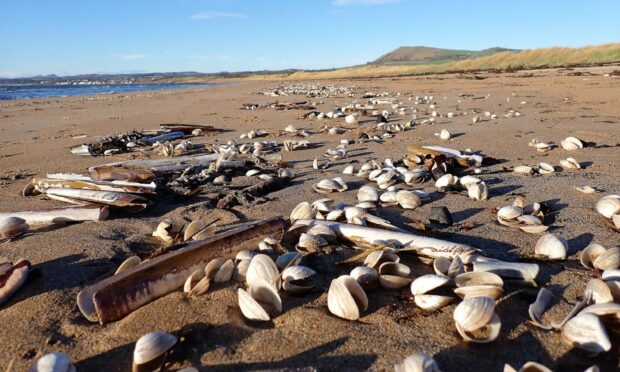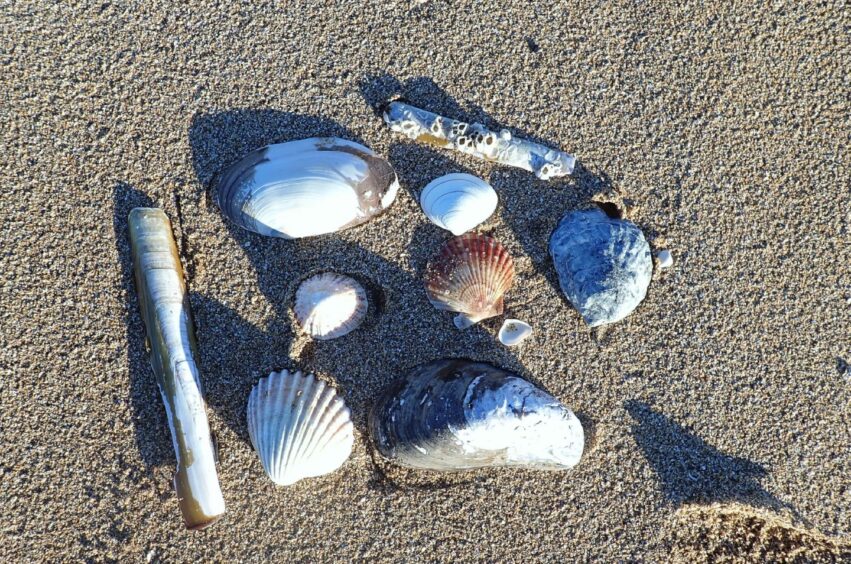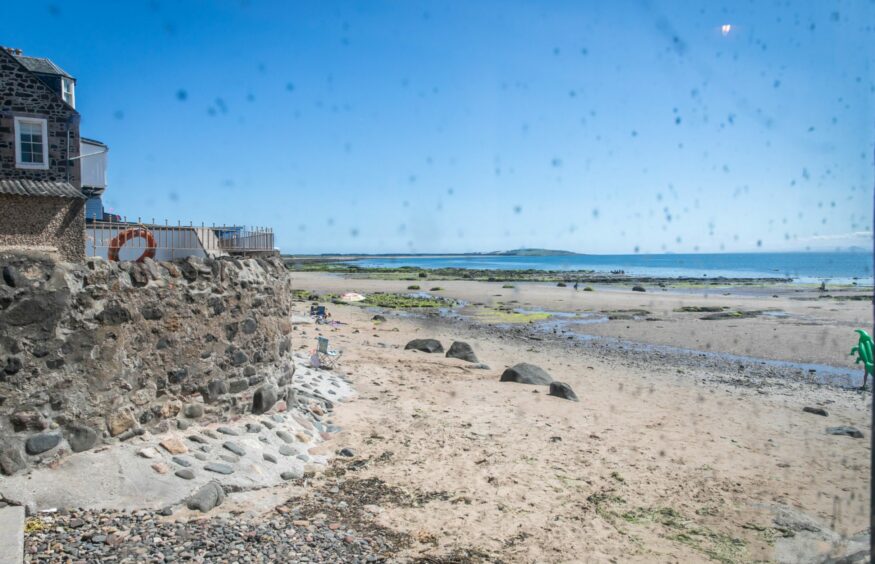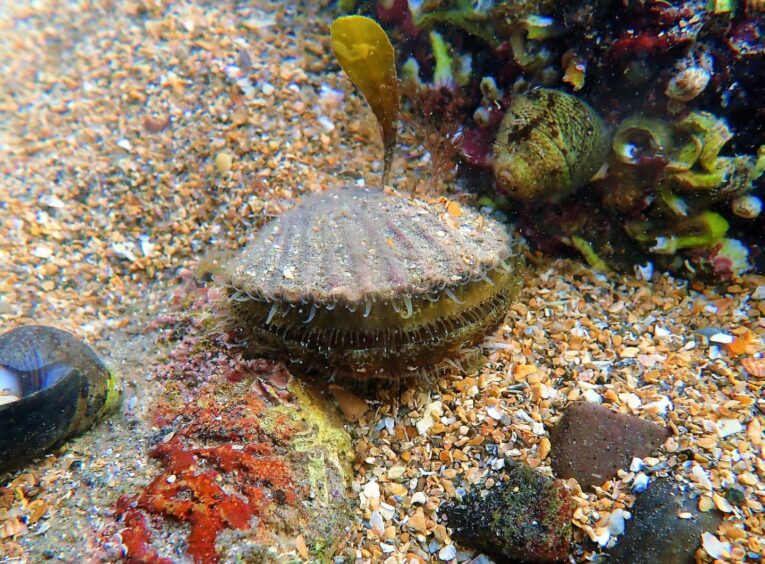There is something gloriously addictive about the coast, a meeting place between two different natural worlds and that narrow blurred bit in-between.
If I am absent from the coast for any length of time, a deep hankering engulfs my body like a thirst that needs quenching.
The sea is irresistible in every imaginable way, powerful and seductive like a magical siren call.
‘Spiritual home’ of Largo Bay
One of my favourite coastal haunts is Largo Bay in Fife, a broad sweep of sand and rock where wildlife abounds at every turn and the briny sea air invigorates the soul like a life-enhancing elixir.
I am continually drawn to Largo Bay, a spiritual home that leaves my mind buzzing with excitement on each visit.
It was high tide on my most recent sojourn, which provided the perfect opportunity to focus on the strandline and the numerous half-shells of molluscs that scattered the upper shore.
There was a broad mix of species, which I began to collect, popping each shell into my jacket pocket.
After a while, I laid each shell down onto the sand and examined my bounty.
It was a rich harvest, which included a razorshell, queen scallop, horse mussel, prickly cockle, otter shell, surf clams and tellins, and an ancient oyster shell.
Some of these molluscs – such as razorshell, prickly cockle, otter shell and surf clam – are mysterious denizens of our inshore waters, which live beneath the sand and mud and are seldom seen in their living form.
These shellfish feed by siphoning and filtering water to glean microscopic plankton.
Filter feeding can be a hazardous business and the fleshy siphons that protrude above the sediment are often nipped-off by flatfish.
Happily, the cropped siphons can regenerate, although this takes time, during which period the shellfish must lose vigour by being unable to feed properly.
Threat of storms
One of the biggest threats facing inshore shellfish are storms.
In shallow seas, the surging forces caused by tumultuous gales are immense, which scour shellfish from their shelters in the soft substrate, causing huge mortalities.
On examining my shellfish collection, I looked with renewed interest at the half-shell of the queen scallop.
It was a beautiful creation, coloured in beige that verged on pink and engraved with radiating ribs.
Cradling the shell in my hand brought back memories of discovering a living queen scallop last summer when snorkelling a few miles up the coast near Elie.
The upper and lower shell of this individual was half-open, through which I could discern numerous eyes on both the top and bottom mantles which sparkled like glistening beads.
Scallops swim and it is likely their eyes help to guide movement when swimming, as well as detect the approach of potential danger.
As I hovered above the queen scallop, it was a strange sensation to realise it was possibly watching my every movement.
This mollusc was a marvel of nature, intricate in design and perfect in form, and a marine treasure about which we still know little about.














Conversation